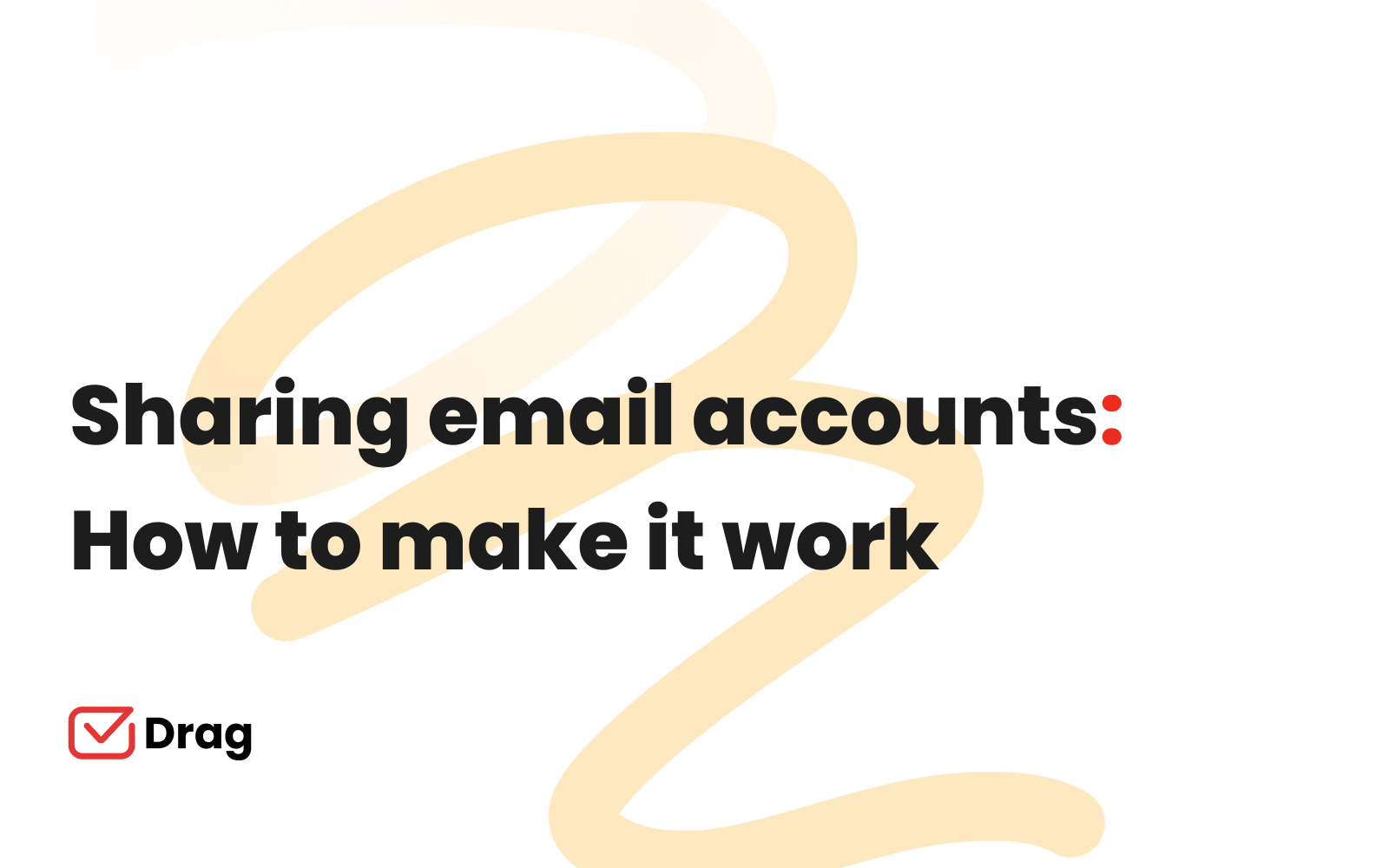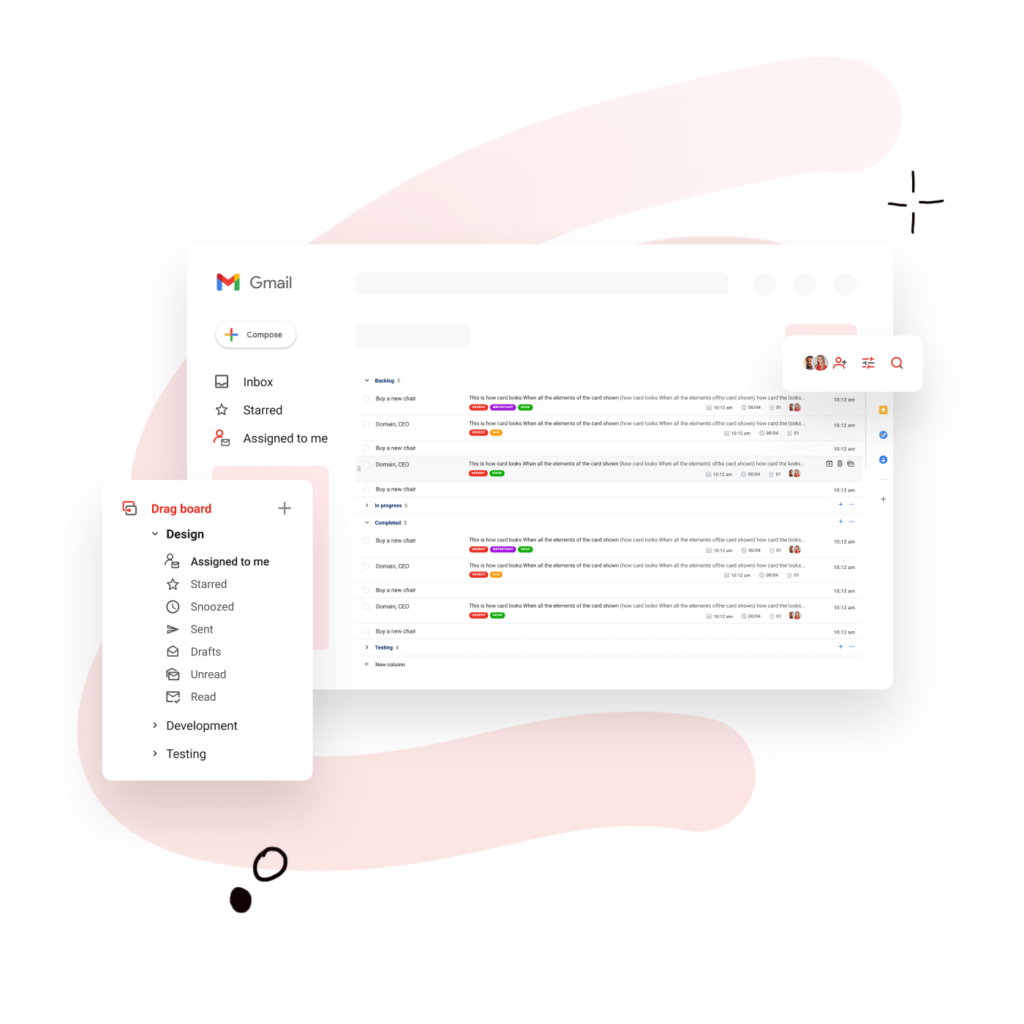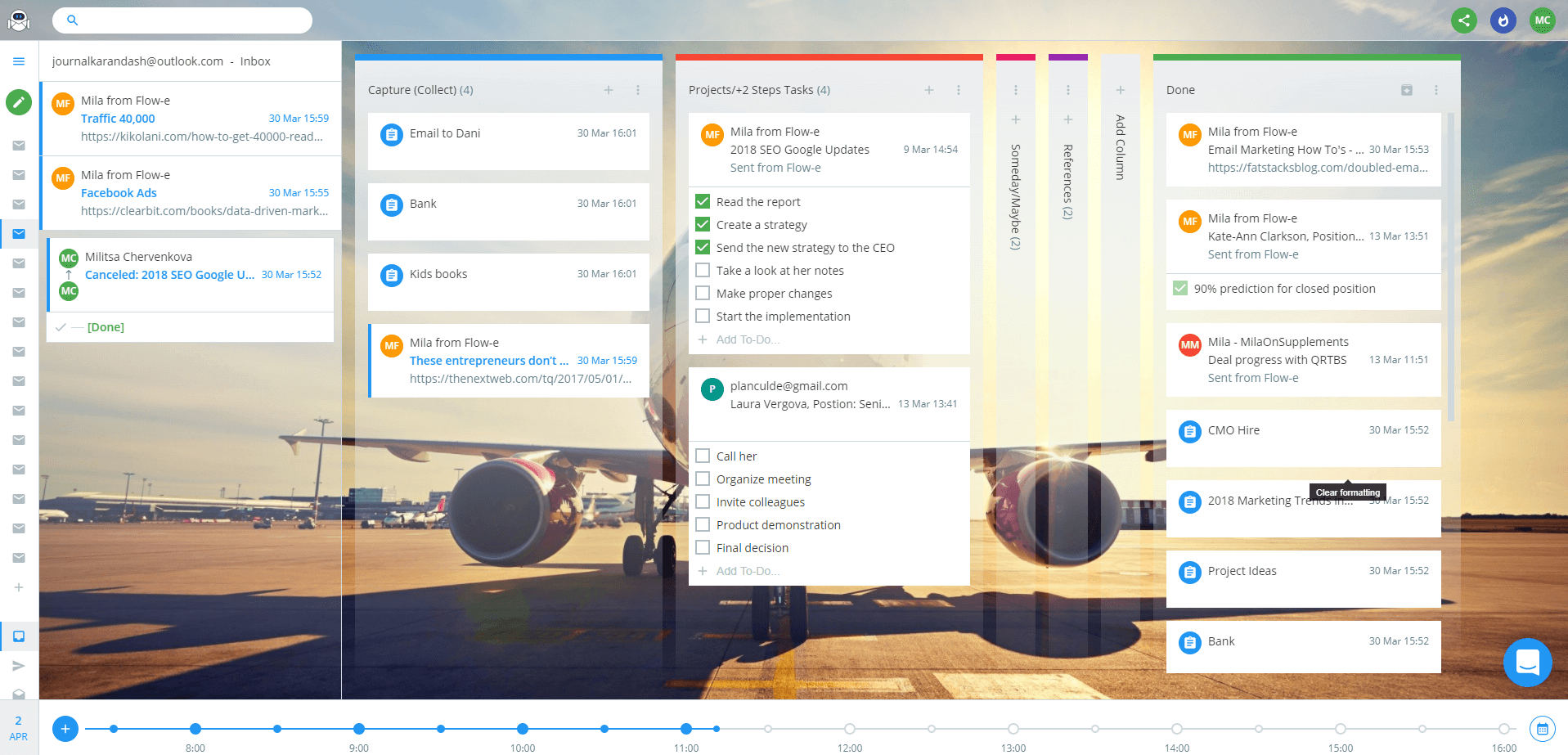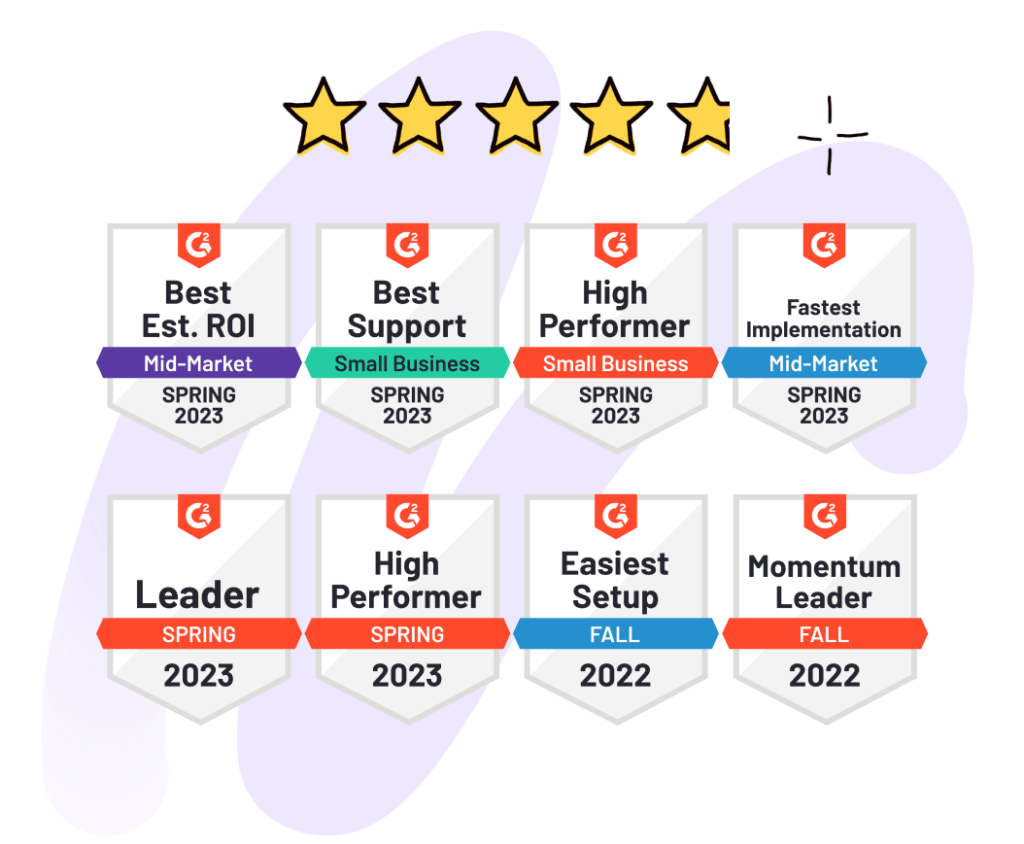
Assigning, delegating, and sharing tasks is how you split the demands and balance the work for a team. It can be a little hard to manage without the help of a spreadsheet, extension, or even software.
However, there’s a few issues when sharing the workload. Managers need to make sure each team member can easily see and access their tasks as well as all the information required for completion.
Shared email accounts can be useful for teams. They can be named after each department, such as sales@companyname or support@companyname. That way, instead of directing communications to a single person, the sender has a way of contacting the whole team.
Sharing these email accounts, however, comes with another set of challenges. In this article, we will explore how internal and external communications can work better for you and your employees.
Why do companies use shared email accounts?
When a team needs to solve issues quickly, the process of forwarding information and replying to each inquiry can take a lot of time. Another factor is that the multiplatform workflow is often split between documents, chats and tasks. This can lead to employees missing steps.
That means the process isn’t streamlined and needs a lot of extra time and effort to be completed. Having multiple people with access to the same account, alternatively, makes all the relevant information searchable by everyone.
It’s common practice to share email accounts for optimizing response time. If the company or department can’t have someone dedicated exclusively to communication, things can slip. So, theoretically, if the entire team is able to do it, there’s a higher chance of replying quickly to an inquiry.
The issue with password sharing
A widely used way of sharing email accounts is to share a spreadsheet with the team with all the accounts and passwords for emails and software. This way, anyone can use the same login and password on their computer to access an account.
This is a big security risk. If someone gets hacked or loses their device, suddenly all of the team’s data may be prone to leaks and invasions. If your employee loses their computer, you wouldn’t want whoever found it access to all of your client’s emails, right?
Besides the safety concerns, there are a few problems with this strategy:
Accountability of the shared email account
The main issue with shared email accounts is the lack of accountability. That is, it’s not possible to monitor who replied to what if an entire team has the same unrestricted access. Furthermore, it is very similar to a tragedy of the commons scenario.
This is a famous concept from game theory. It states that when people have access to a shared resource (also called a common), they act in their own interest which, in turn, causes dismissiveness around the resource.
In layman’s terms, people are incentivized to approach the email account in a way that privileges them. Like deprioritizing the shared tasks and free riding on their coworkers. These individual behaviors will go untraced, but if enough team members act this way, performance will suffer.
Platform limits
Many email platforms have a limit on how many devices can be logged in without raising suspicions. This means that you won’t be able to have the entire team simultaneously access the inbox without risking a block from your provider. If you limit who can access the messages, you fall into the same lack of information loop as before.
The entire team needs to have access to all the relevant emails and files related to their tasks and routines. Otherwise, the workflow is limited and inefficient.
Geographic limits
Nowadays, remote and global teams are becoming more common. When working remotely there is a significantly greater reliance on effective communication systems. You know, you just can’t go over your coworkers desk to clear something up. On top of that there is a big chance that the working hours are asynchronous. So it may take several hours to get an answer. If the communication doesn’t run smoothly and everyone is just replying emails whenever it’s convenient for them, things can go wrong. For example, a message may be overlooked or accidentally replied by two different people.
Another issue happens when people access the account simultaneously. The platform is going to detects IPs from different parts of the world logged in at the same time. It is probably going to raise suspicions and get your account flagged as spam and deleted.
Access to other apps
If the shared email account is used to login into other relevant services, the issues above trickle down. Say, the marketing team needs to have access to the relevant CRM platform. However, since it’s linked to an account multiple people share, the security of other platforms is compromised. The more points of access you have, the more likely it is for someone to be hacked and cause issues.
How to actually share email accounts
 If you have multiple people accessing the same email account, you need to rethink this structure. Just think about it, to delegate email-driven tasks you would need to use other tools. Now you’re switching between the email client, an Instant Messenger (Slack, Skype, Google Chat) and a task management tool or spreadsheet. This isn’t the best way of keeping your productivity up high, and it can make you lose time and focus.
If you have multiple people accessing the same email account, you need to rethink this structure. Just think about it, to delegate email-driven tasks you would need to use other tools. Now you’re switching between the email client, an Instant Messenger (Slack, Skype, Google Chat) and a task management tool or spreadsheet. This isn’t the best way of keeping your productivity up high, and it can make you lose time and focus.
To eliminate all these problems there is a specific simple tool used by several email-driven teams: shared inboxes. With this tool, everyone on the team has access to an inbox and its messages while using their own account.
Briefly, with a shared inbox you get your regular inbox [email protected] and also your team’s inbox, for instance, [email protected]. The emails sent to the sales email address will arrive on each of the the salespeople’s mailboxes. They will be able to see and act on them in real-time.
There are many benefits of having shared inbox software. Through a team inbox like this, you can share emails that matter, turn them into tasks to be done, and assign people to take care of them. Let’s see some other advantages:
Remove extra steps
In a regular inbox, when you need to share an email with more people, you need to click on “forward” and choose who you believe needs that information to do their job or help you. The back and forth takes time and, if someone misses part of the conversation, they will need to be updated later, thus creating even more steps.
Process things faster
Basically, different people can access the same messages and reply to them in real-time on a shared inbox. But on a regular inbox, a long time goes by between first receiving and reading the email, the time to forward the email, and the time the other person deals with the email. Sometimes they reply to you again, and you need to act on it again. On a shared inbox, you can eliminate all of this amount of time.
Keep your team on the same page
Miscommunication has always been one of the biggest problems with email, most of all when it involves several people. If your team consists of many different employees with different communication styles, this can be exacerbated.
The ideal scenario involves all parties getting relevant information at the same time, reducing the risk of misinterpretation or he-said-she-said issues. That way, everyone can see the same requests and tasks openly.
The best tools for email collaboration
With remote work on a rise and global teams being formed, clear communication is more essential than ever and the scenario for email organization and management apps has grown significantly. Today, many options are ranging from robust apps and software to email extensions that you can easily install in Google Chrome. Check out some options below:
Flow-e
 If you’re looking for a shared inbox tool, Flow-e is for you. Flow-e used to work in both Outlook and Gmail, but it has recently shut down its operations in the latter. It works as a visual task board for your email, where you can delegate tasks, schedule meetings, manage your workflow, and set the deadlines from your duties.
If you’re looking for a shared inbox tool, Flow-e is for you. Flow-e used to work in both Outlook and Gmail, but it has recently shut down its operations in the latter. It works as a visual task board for your email, where you can delegate tasks, schedule meetings, manage your workflow, and set the deadlines from your duties.
Drag App
Drag is a shared mailbox tool that will have a great positive impactive on your productivity, communication, and time management. It is for companies that want to boost their email performance with systems that were designed for it. With Drag, you can have a complete email experience in your Gmail inbox.
Tools include a project manager that can be split into kanban boards for easy visualization, the ability to delegate each activity, share reminders and deadlines. It can be used in many parts of your company.
Client support, for example, often needs a robust team with easily accessible knowledge. If everyone is aware of what has and what hasn’t been solved or can easily find answers, you can reply quickly and efficiently to your clients.
DragApp can also be used as a content planning tool, by breaking the routine and special tasks into deadlines the entire team can access. With that, you can also easily share files with all important people without having to forward multiple emails a day.
Conclusion
No matter the size of your company or the industry you’re in, having a streamlined workflow can help it be more productive. By using these tools, your team can be easily updated without ever leaving their own email inboxes.
A shared inbox with your team will bring collaboration, alignment, and delegation the way it should be. Tracking, performance reports, excellent visualization, and organization are also huge differentials that you need to check before investing in an email management platform.
Share your email account the right way.
DragApp is an easy-to-use affordable tool that can help you set up your shared inbox and task manager. With an user-friendly interface, the interactions between business owners, managers, employees, clients and suppliers are easier, problems are solved quickly and the company grows better.
If you have any questions on how Drag can help your team, contact us!







